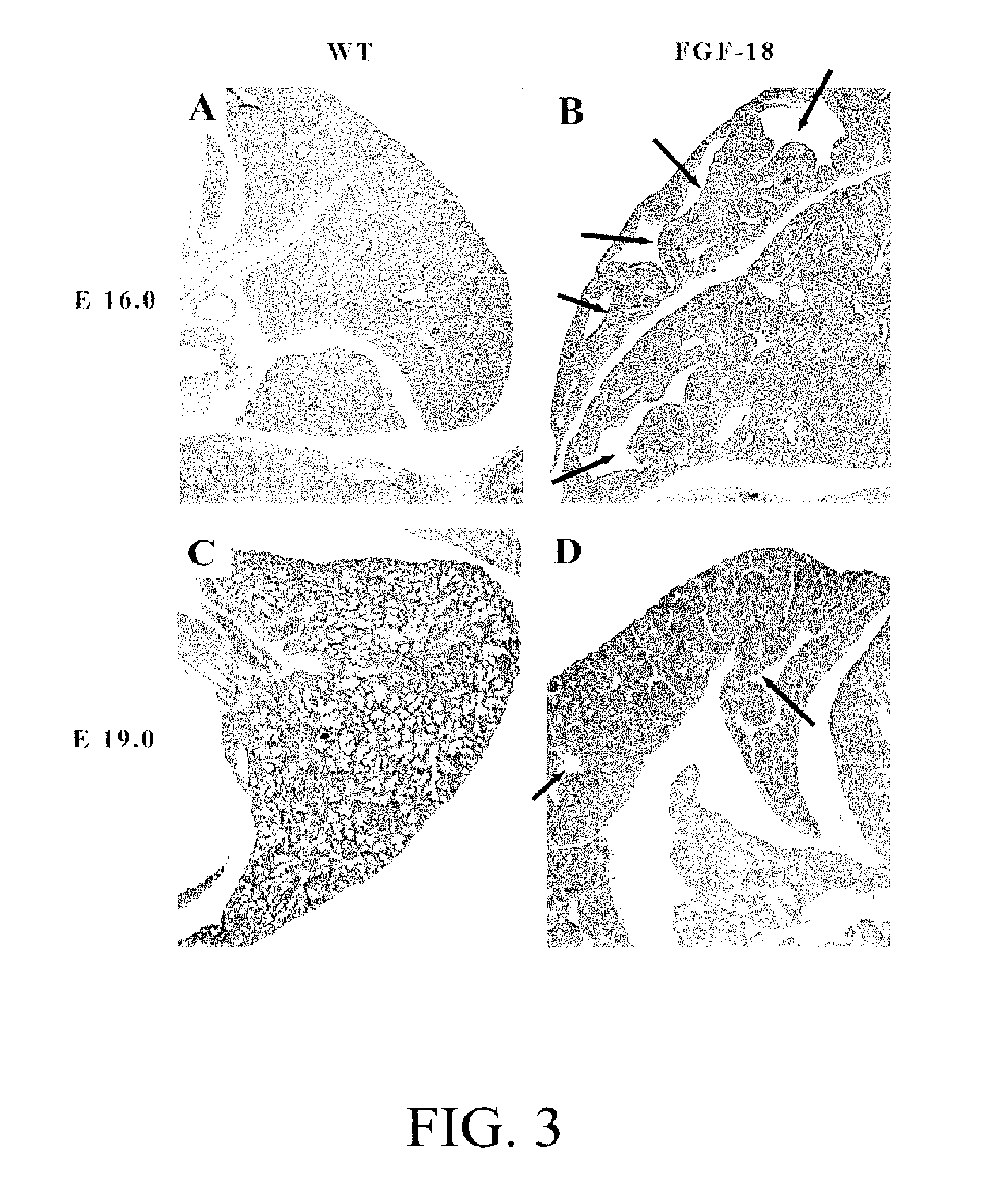Use of FGF-18 Protein, Target Proteins and Their Respective Encoding Nucleotide Sequences to Induce Cartilage Formation
a technology target proteins, applied in the field of fibroblast growth factor (fgf)18 protein, can solve the problems of difficult or impossible to remedy devastating deformities, larynx, and relatively poor cartilage vascularization, and achieve the effect of inducing cartilage programming
- Summary
- Abstract
- Description
- Claims
- Application Information
AI Technical Summary
Benefits of technology
Problems solved by technology
Method used
Image
Examples
examples
[0114]The following example illustrates the capability of FGF-18 to induce cartilage formation in the conducting airways.
A. Experimental Procedures
[0115]1. Transgenic Mice
[0116]A permanent transgenic mouse line bearing the SP-C-rtTA transgene is established in FVB / N background after oocyte injection of a plasmid construct consisting of 3.7 kb of the human SP-C promoter, placed 5′ to the rtTA gene construct. See Clark et al, Am. J. Physiol., (2001) 280:L705-15; Tichelaar et al, J. Biol. Chem., (2000) 275:11858-64; and Glasser et al, Am. J. Physiol., (1991) 261:L349-56. Mouse FGF-18 cDNA is inserted between the (teto)7CMV promoter and the 3′ untranslated region of the bovine growth hormone gene. See Clark et al, Am. J. Physiol., (2001) 280:L705-15. The rtTA and (teto)7 constructs are provided by Dr. Herman Bujard, ZMBH-Heidelberg. See Gossen et al, Proc. Natl. Acad. Sci. USA, (1992) 89:5547-51. Offspring of all founders are screened by Southern blot or PCR analysis. Mice transmitting ...
PUM
| Property | Measurement | Unit |
|---|---|---|
| weight ratios | aaaaa | aaaaa |
| area | aaaaa | aaaaa |
| elastic | aaaaa | aaaaa |
Abstract
Description
Claims
Application Information
 Login to View More
Login to View More - Generate Ideas
- Intellectual Property
- Life Sciences
- Materials
- Tech Scout
- Unparalleled Data Quality
- Higher Quality Content
- 60% Fewer Hallucinations
Browse by: Latest US Patents, China's latest patents, Technical Efficacy Thesaurus, Application Domain, Technology Topic, Popular Technical Reports.
© 2025 PatSnap. All rights reserved.Legal|Privacy policy|Modern Slavery Act Transparency Statement|Sitemap|About US| Contact US: help@patsnap.com



